#historic photography
Text

A Wet Night, Columbus Circle, William A. Fraser, 1897-98
#photography#historic photography#cityscape#rain#rain scene#rainy night#William A. Fraser#19th century photography#b&w#b&w photography#gelatin silver print#Nelson-Atkins Museum of Art
1K notes
·
View notes
Photo
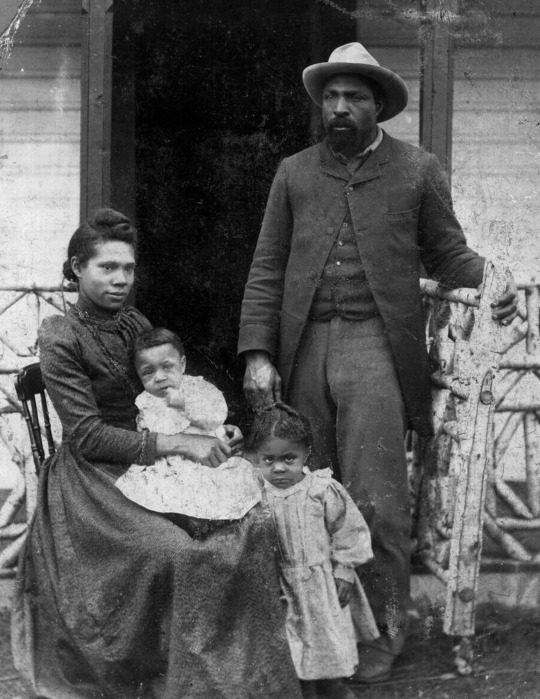


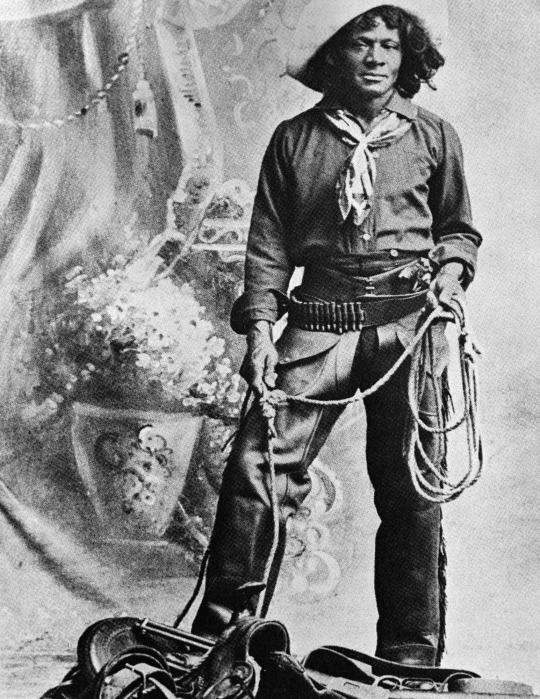


black cowboys
john ware (1845-1905)
bass reeves (1838-1910)
bose ikard (1843-1929)
nat love (1854-1921)
bill pickett (1870-1932)
mary fields (1832-1914)
#there's some more but no pictures#history#cowboys#photography#vintage#vintage photography#historic photography#john ware#bass reeves#bose ikard#nat love#bill pickett#mary fields
345 notes
·
View notes
Text
Summer Scene, 1866 by G. Gable
Harry Stephens was a former house servant of Alexander Hamilton Stephens, vice-president of the Confederacy and, after the war, U.S. senator. The photograph was likely made on the grounds of Liberty Hall, Alexander Stephens's home in Crawfordsville, Georgia. In its modest scale, careful annotation, and evocative title, the photograph remains a personal document that is nonetheless especially poignant and monumental. Harry and Eliza Stephens and their five children had survived slavery and the war. A local photographer's success at recording the family's collective possession of their new freedom is one of the more remarkable achievements of the still unseasoned medium.
Source: The Metropolitan Museum of Art
Visit www.attawellsummer.com/forthosebefore to learn more about Black history.
Need a freelance graphic designer or illustrator? Send me an email.
#Harry Stephens#Crawfordsville#Georgia#Crawfordsville Georgia#Georgia history#Eliza Stephens#1800s#1860s#G. Gable#historic photography#historic photographs#Alexander Hamilton Stephens#American history#Black history 365#Black history blog
2 notes
·
View notes
Photo
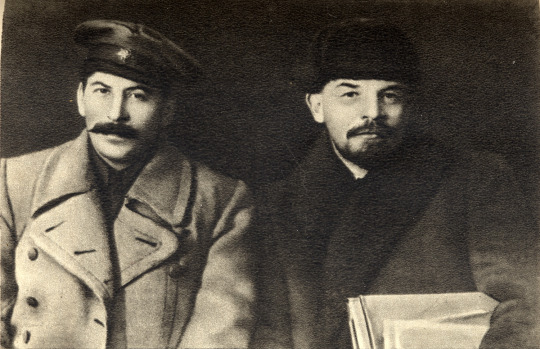
Joseph Stalin and Vladimir Lenin
ph source: https://bookhaven.stanford.edu/tag/joseph-stalin/
... Lenin does not seem to provide particular evidence of enjoying killing for its own sake. To Lenin applies the old line about loving humanity but despising individual humans. Stalin, by contrast, was a Georgian who relished feuds for their own sake. He seemed to take a lascivious pleasure in pitting his subordinates against one another, whether it was accusing them of plotting to subvert his leadership or simply forcing them to engage in endless drinking bouts while he mocked them.
Stalin had no shortage of ways of rubbing out his real or perceived opponents, ranging from mass executions to more indirect methods—in his memoirs, Anton-Antonov Ovseyenko recounts, among other things, Stalin's proclivity for ordering medical operations that somehow ended fatally. But under Stalin's stewardship, the Soviet Union—the NKVD—became the supreme practicioner in the diabolical black arts of injecting victims with harmful potions. The NKVD has its own laboratory, which was revealed at the last major purge trial when its former director, Genrikh Yagoda, was accused in 1938 of having sought to use it to poison Stalin and other Bolshevik worthies. Today, Russia continues to enjoy a particular proficiency in this singular line of work, which is presumably why Alexander Litvinenko, a Russian dissident and former FSB officer, had the misfortune to find himself ingesting polonium-210 in a fatal cup of tea in London in 2006.
Might the Soviet experiment, as it was known, have turned out differently in the event of Lenin's ruling the Soviet Union for several more decades? Could he have made a go of the enterprise? Would Trotsky and Bukharin have been promoted rather than Stalin, and would a kinder, gentler Soviet Union have emerged?
https://nationalinterest.org/blog/jacob-heilbrunn/did-stalin-murder-lenin-6892
#stalin#lenin#communism#ussr history#joseph stalin#vladimir lenin#russian history#historic photography#history#mu photo#mu
4 notes
·
View notes
Text
yknow when you get a photography book and the whole thing is just top quality but then theres that ONE photo that always hits you like a ton of bricks and you'd have bought the book for that photo alone?

That's this photo for me. Photo credit/information below:

(the book is called Image & Exploration - Early Travel Photography from 1850 to 1914)
0 notes
Text

#history#vintage#family#father and son#sweet#heartwarming#love#silly#1900s#historic photography#family portrait
0 notes
Text
thinking about her (old stockholm telephone tower in use 1887-1913)

"...some Stockholmers said that the [lines] were so dense they would obscure the sun," said the then 90-year-old Karl-Väinö Tahvanainen, who worked in the tower, in an interview with SvD in 2012 (x)
13K notes
·
View notes
Text

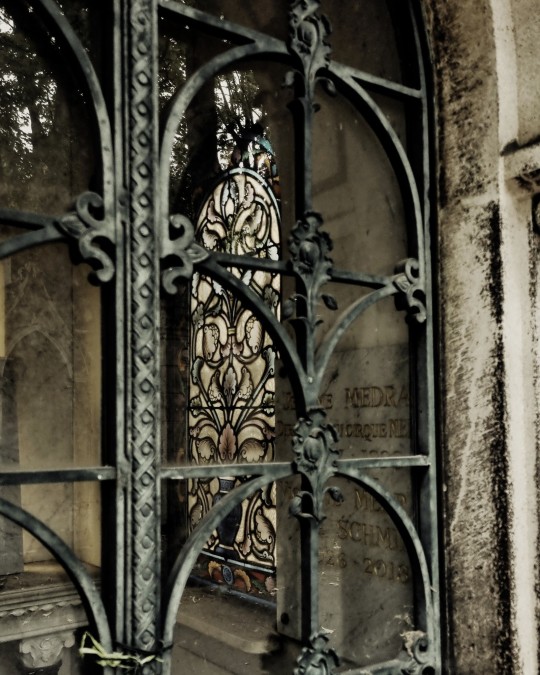
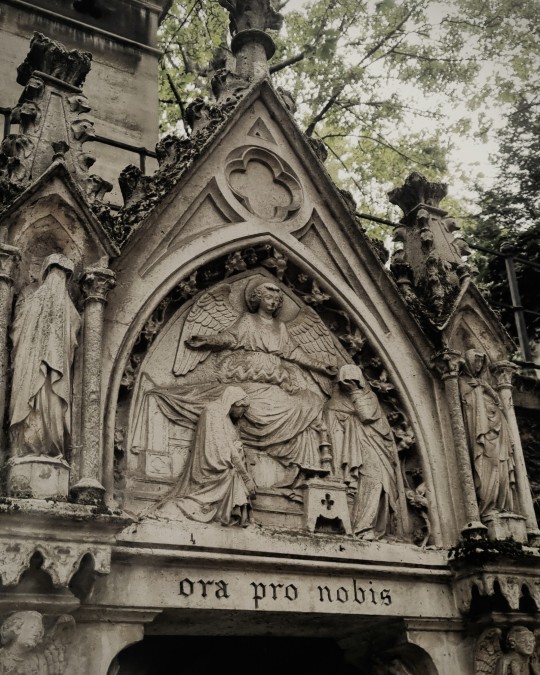

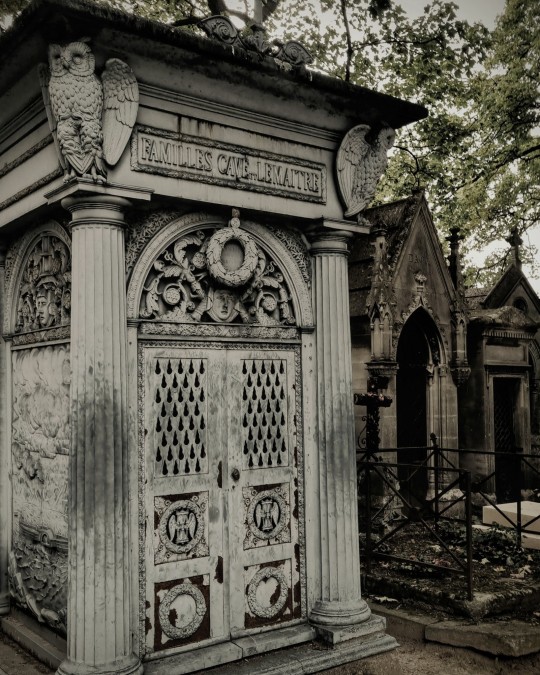

Montmartre Cemetery 🕊️
Paris, France, 24 VIII 2023
#cemetery#places#graveyard#photography#olga's diary#my photography#gothic#gothic aesthetic#goth aesthetic#dark academia#dark aesthetic#paris#historical places#goth#creepy aesthetic#spooky aesthetic#spooky season#autumn aesthetic#fall aesthetic#halloween#tw death#vampire aesthetic#churchyard#vampire#dark photography#gothique#ivy#greencore#autumn#fall
8K notes
·
View notes
Text

Lightning strikes the Eiffel Tower, June 3, 1902, 9:20 P.M. Photo from Thunder and Lightning by Camille Flammarion, trans. Walter Mostyn, published 1906.
#photography#history#historic photography#early photography#lightning#thunderstorm#Eiffel Tower#20th century photography#Camille Flammarion
200 notes
·
View notes
Photo




josephine baker photographed by george hoyningen-huene for vanity fair (1927)
#josephine baker#women in history#george hoyningen-huene#vanity fair#photography#ph#vintage photography#vintage#1920s#history#historic photography
249 notes
·
View notes
Text
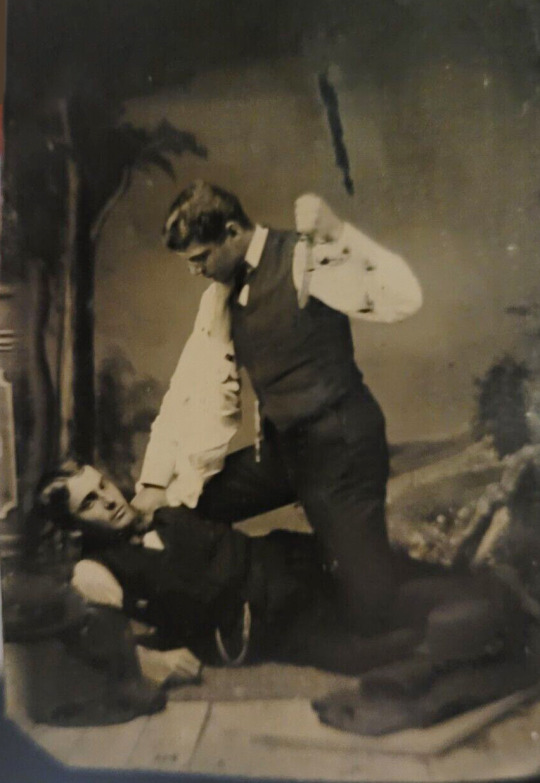
Tintype of what appears to be a light-hearted spot of stabbing between friends, circa 1880
#are they... you know... recreational homicide reenactors?#gay interest#19th century#19th century photography#tintype#ferrotype#19th century fashion#men's fashion#historical fashion#fashion history#1800s#1880s#winning hearts not acting awards
19K notes
·
View notes
Text

for the global strike, I painted a scene from pre-Nakba Palestine with the colors of the Palestinian flag. from the river to the sea, Palestine will be free.
here is the reference photo I used, which I downloaded from the Palestine Photo Project. it is a view of Bethlehem in 1945.

5K notes
·
View notes
Text

“At twenty she was brilliant and adored,
Phi Beta Kappa, sought for every dance;
Captured symbolic logic and the glance
Of men whose interest was their sole reward.
She learned the cultured jargon of those bred
To antique crystal and authentic pearls,
Scorned Wagner, praised the Degas dancing girls,
And when she might have thought, conversed instead.
She hung up her diploma, went abroad,
Saw catalogues of domes and tapestry,
Rejected an impoverished marquis,
And learned to tell real Wedgwood from a fraud.
Back home her breeding led her to espouse
A bright young man whose pearl cufflinks were real.
They had an ideal marriage, and ideal
But lonely children in an ideal house.
I saw her yesterday at forty-three,
Her children gone, her husband one year dead,
Toying with plots to kill time and re-wed
Illusions of lost opportunity.
But afraid to wonder what she might have known
With all that wealth and mind had offered her,
She shuns conviction, choosing to infer
Tenets of every mind except her own.
A hundred people call, though not one friend,
To parry a hundred doubts with nimble talk.
Her meanings lost in manners, she will walk
Alone in brilliant circles to the end.”
Ellen Kay
#artwork#digital art#art#sketch#fanart#my art#sketchbook#digital drawing#digital illustration#digital sketch#poems and poetry#modern poetry#poetry#poem#Ellen Kay#Ellen Kay poem#historical#historic photography#history#english literature#dark academia#rennaisance aesthetic#30s aesthetic#drawing#artistic#fantasy
1 note
·
View note
Text
📷 Lewis Hine 📷
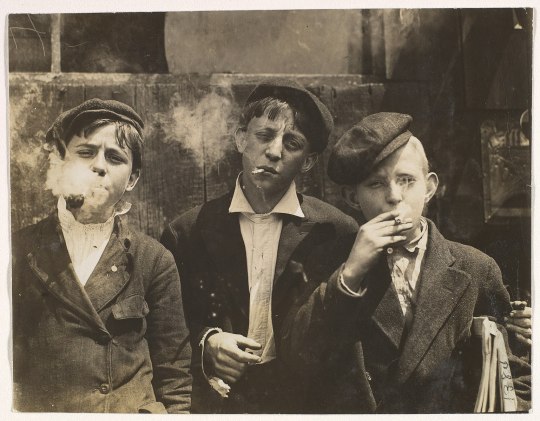
Lewis Hine - Newsies, 1910 - Newsies: Newsies at Skeeter's Branch, Jefferson near Franklin. They were all smoking. St. Louis, Missouri.
Lewis Hine, Photographer of the American Working Class
Few American photographers have captured the misery, dignity, and occasional bursts of solidarity within US working-class life as compellingly as Lewis Hine did in the early twentieth century.
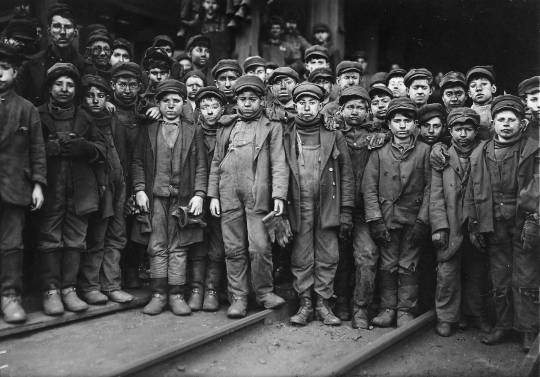
Lewis Hine - Breaker boys, 1910 - Child workers who broke down coal at a mine in South Pittston, Pennsylvania.

Lewis Hine - Little Spinner 1909, Globe Cotton Mill. Overseer said she was regularly employed. Augusta, Georgia. Library of Congress

Lewis Hine - Ten Year Old Spinner, North Carolina Cotton Mill, 1908

Lewis Hine - Little Lottie 1911. She was a regular oyster shucker in Alabama Canning Co. (Bayou La Batre, Alabama)

Lewis Hine -Little Rosie 1913. She was a regular oyster shucker. She was just 7 years old and in her second year at Varn & Platt Canning Co. Bluffton, South Carolina
As an investigative photographer, Hine chronicled the normalized labor abuses in US factories leading up to the Great Depression. Not only did he help introduce some of the country’s first child labor laws, he also revolutionized photography’s artistic use value.
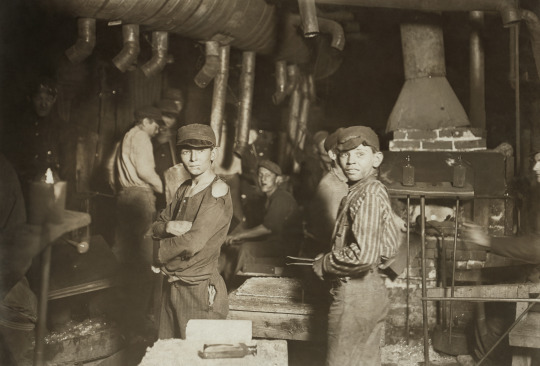
Lewis Hine - Child laborers in glasswork. Indiana, 1908
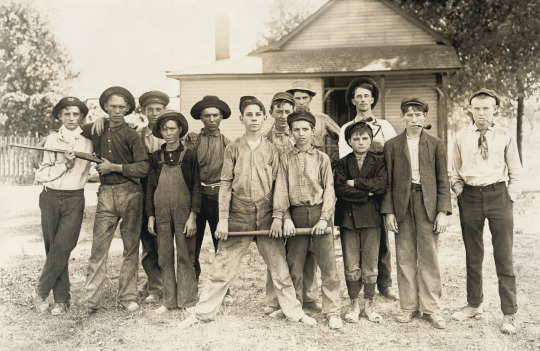
Lewis Hine -Baseball team composed mostly of child laborers from a glassmaking factory. Indiana, 1908

Lewis Hine - Factory Boy, Glassworks, Alexandria, Virginia, 1909
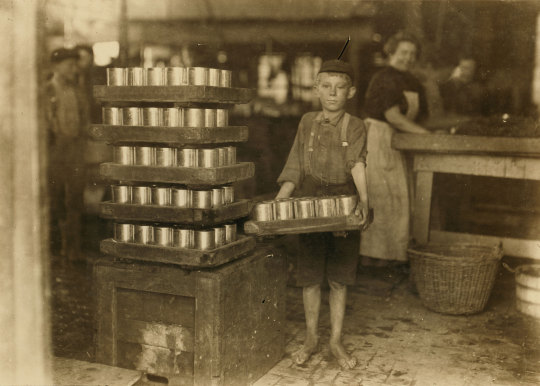
Lewis Hine - One Of The Loading Boys In J. S. Farrand Packing Co. Baltimore, Maryland, 1909
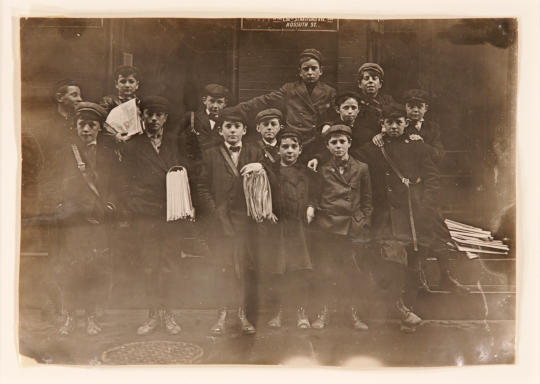
Lewis Hine - Newsboys, Bridgeport Conn., 1909
Hine once argued that a good picture is “a reproduction of impressions made upon the photographer which he desires to repeat to others.” For him, an organized workforce was the epitome of empathy and mutual benefit, which he hoped to convey to the greater American public.

Lewis Hine - Empire State Building worker in 1931

Lewis Hine - Power house mechanic working on steam pump, 1920.

Lewis Wickes Hine
(1874-1940)
“If I could tell the story in words, I wouldn’t need to lug around a camera.” -Lewis Hine
#photography#vintage photography#lewis hine#historical photos#child labor#labor laws#investigative photographer
4K notes
·
View notes
Text

"Taking the veil", painting by Emile Renard
French vintage postcard
#painting#renard#tarjeta#postkaart#emile renard french#sepia#veil#historic#photo#postal#briefkaart#photography#vintage#ephemera#ansichtskarte#old#postcard#french#taking#postkarte#emile#carte postale
1K notes
·
View notes